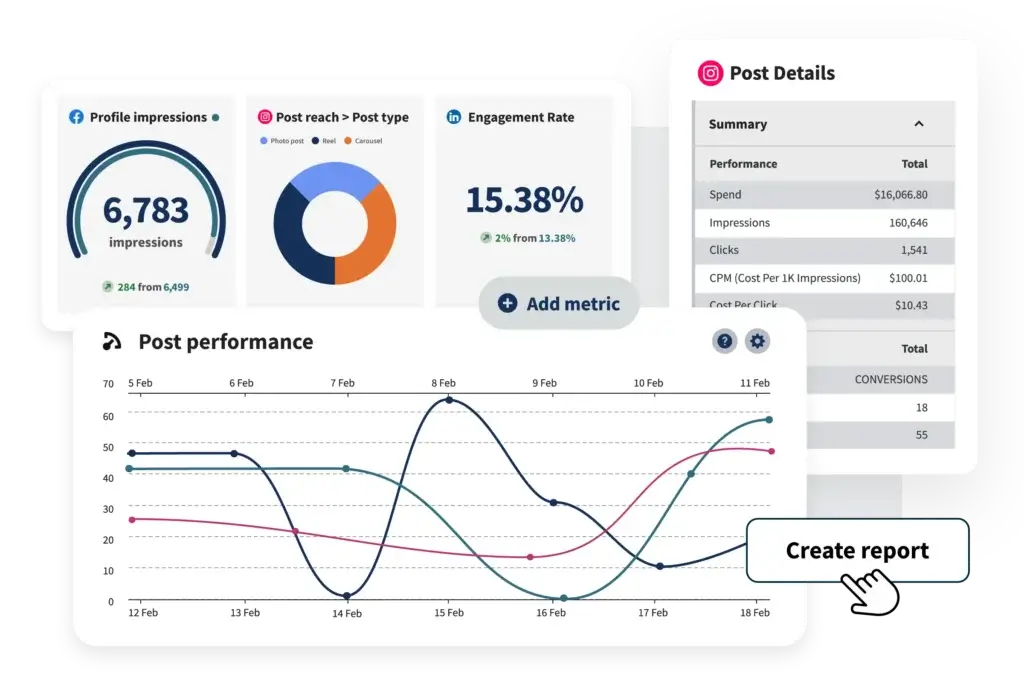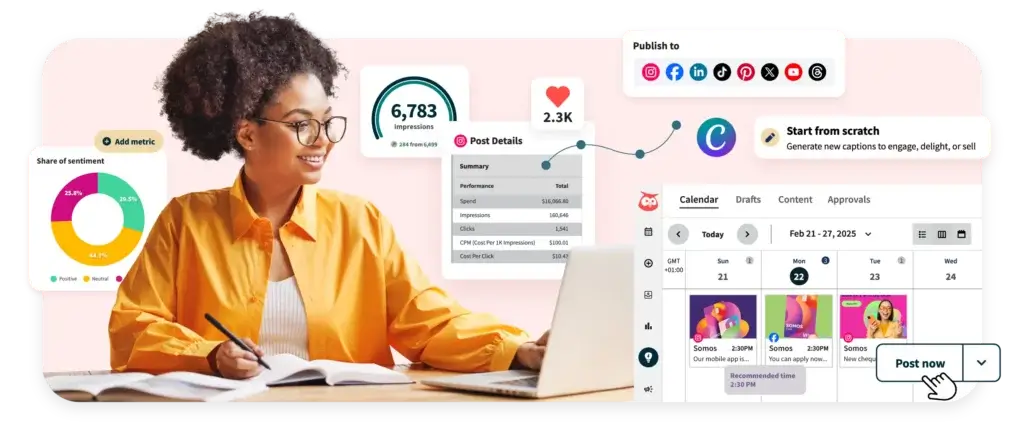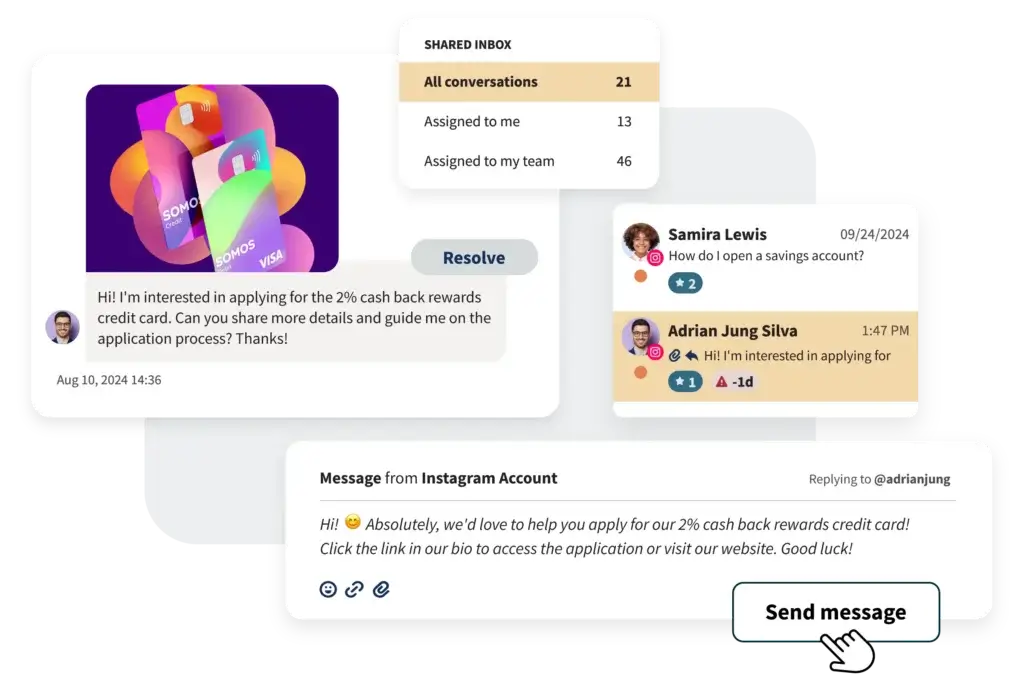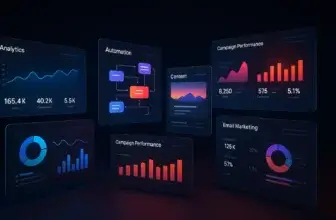Introduction
Social media management can easily become chaotic when you’re juggling several platforms. Hootsuite positions itself as a unified solution: a single dashboard where you can plan, publish, engage, and analyze your social presence. This review offers a detailed look at the product’s capabilities, costs, and suitability for different types of users. By the end, you’ll have a clear understanding of whether Hootsuite fits your marketing workflow and how to maximize its value.
What Is Hootsuite?
Hootsuite is a social media management platform that allows you to manage multiple social accounts from one place. Launched in 2008 under the name BrightKit, it has evolved into one of the most recognizable names in social scheduling. Its core purpose is to help you schedule posts, monitor conversations, and measure performance without constantly switching between apps.
Background and Evolution
Over the years, Hootsuite has shifted from a simple scheduling tool to a comprehensive marketing hub. Early versions focused mainly on Twitter scheduling, but the platform now supports Facebook, Instagram, LinkedIn, TikTok, YouTube, Pinterest, and more. Features such as analytics, social listening, and AI‑powered content suggestions have been added to keep pace with changing user needs. In 2025, Hootsuite introduced enhanced integrations with Canva, Grammarly, and an AI content assistant, broadening its toolkit for modern marketers.
Target Users and Use Cases
Hootsuite caters to a variety of audiences:
- Solo entrepreneurs and small businesses – You can manage up to ten social profiles in the Professional plan, which is ideal if you’re running all marketing yourself.
- Marketing teams and agencies – The Team and Enterprise plans offer multi‑user access, approval workflows, and advanced analytics to coordinate larger teams.
- Large brands – Enterprises gain deeper social listening and reporting, custom permissions, and dedicated support for complex social strategies.
- Educational and nonprofit organizations – With discounted plans, these groups can leverage the platform’s scheduling and monitoring tools without breaking their budget.
Regardless of your size, Hootsuite aims to provide a central hub where you can streamline content creation, maintain consistent branding, and analyze results across channels.
How Does It Work?
Key Features of Hootsuite
Hootsuite’s feature set is extensive. Below are the core capabilities that drive its appeal.
Social Profile & Multi‑Channel Publishing
At the heart of Hootsuite is the ability to connect multiple social accounts and publish content across all of them from a single dashboard. You can draft posts, attach images or videos, and choose which profiles to publish on. The platform supports Facebook, Instagram, LinkedIn, Twitter (X), TikTok, Pinterest, and YouTube, ensuring broad coverage. This unified posting experience helps eliminate the repetitive task of logging into each network separately.
An intuitive composer lets you preview your post as it will appear on each platform. You can add emojis, hashtags, shortened links, and even design graphics via Canva without leaving Hootsuite. If you frequently repurpose posts, the composer allows you to tailor captions and media for each channel, ensuring your content looks native everywhere.
Content Scheduling & Calendar View
One of Hootsuite’s most celebrated features is its robust scheduling tool. You can create and queue posts days, weeks, or even months in advance. The calendar view displays scheduled content in a weekly or monthly grid, making it easy to spot gaps and adjust your cadence. Hootsuite also provides recommended posting times based on engagement data, so you can optimize for when your audience is most active.
Within the calendar, you have full control over draft, scheduled, and published posts. You can drag and drop posts to new dates, filter by social account or post status, and set campaigns around specific events. This visual planner is particularly helpful for coordinating promotional themes and ensuring a consistent content flow across platforms.
Engagement, Inbox & Social Monitoring
Managing conversations is simpler when everything is in one place. Hootsuite’s Inbox 2.0 consolidates comments, mentions, and direct messages across your connected accounts. You can respond to messages, assign threads to team members, and apply tags to keep track of customer interactions. On higher tiers, automated responses and alerts reduce response times by triggering quick replies when certain keywords appear.
Beyond direct engagement, Hootsuite offers social listening tools to monitor brand mentions and trending topics. You can search for keywords, competitor names, or industry phrases to understand sentiment and join relevant conversations. A sentiment score indicator helps you gauge positive or negative feedback at a glance. Filtering options allow you to narrow results by language, region, or media type.
Analytics & Reporting Dashboards
Data-driven marketers need insights into what works and what doesn’t. Hootsuite’s analytics section provides reports for follower growth, engagement, reach, and click‑through rates. You can generate branded reports using templates such as brand awareness or audience engagement. These templates are customizable; you select metrics, date ranges, and social accounts to create reports that suit your objectives.
Advanced plans include benchmarking tools to compare your performance against industry averages or specific competitors. You can also measure organic versus paid performance, track conversions, and export data for offline analysis. Weekly scorecards highlight your top‑performing content and suggest areas for improvement.
Team Collaboration, Roles & Workflows
Collaboration is crucial when multiple stakeholders manage social media. Hootsuite enables you to assign roles (admin, editor, viewer) and permissions for each user. In the Team and Enterprise plans, you can set up approval workflows so that drafts require sign-off before publication. This ensures brand consistency and reduces the risk of publishing errors.
For shared inboxes, you can assign conversations to specific team members and track who is responding in real time. Activity logs record edits, approvals, and scheduled posts, providing accountability and transparency. Collaboration features also extend to shared content calendars and note-taking within analytics reports.
Integrations, Add‑ons & AI‑Assisted Tools
Hootsuite’s ecosystem includes over 150 integrations in its app directory. Popular options include Google My Business, Mailchimp, HubSpot, Slack, Dropbox, Canva, and OneDrive. These integrations help you pull content from external sources, sync contacts, or track conversion metrics. Some apps are free, while others require separate subscriptions.
Recent additions include an AI content assistant known as OwlyWriter. This tool can brainstorm ideas, write captions, and optimize post length or tone. While convenient, results may require manual editing to suit certain networks like LinkedIn. The platform also offers a Link‑in‑Bio tool to centralize your links and automate link tracking across campaigns.

Pros and Cons
Benefits and Limitations of Using Hootsuite
Positive
✅ Centralized management
✅ Robust scheduling tools
✅ Comprehensive analytics
✅ Team collaboration
Negative
❌ Learning curve
❌ Mixed customer support
❌ Interface clutter
❌ Limited advanced features on lower tiers
Strengths & Benefits
Hootsuite has several advantages that make it attractive for social media managers. These strengths stem from its all‑in‑one approach and maturity as a product.
- Centralized management – You handle all your social channels, messages, and analytics in one place, reducing tool switching and saving time.
- Robust scheduling tools – The calendar and bulk scheduler let you plan content weeks in advance. Recommended posting times help you optimize engagement.
- Comprehensive analytics – Reporting templates and benchmarking tools provide actionable insights into audience growth and campaign performance.
- Team collaboration – Role‑based permissions and approval workflows facilitate teamwork while protecting brand voice.
- Extensive integrations – Over 150 apps and built‑in AI tools expand functionality without leaving the platform.
Limitations & Drawbacks
Despite its strengths, Hootsuite isn’t perfect. Consider these potential drawbacks before subscribing:
- Learning curve – The dashboard offers many features and can feel overwhelming for first‑time users. Extensive onboarding is often necessary.
- Mixed customer support – Feedback on response times is inconsistent; some users experience delays when seeking help.
- Interface clutter – While comprehensive, the interface can appear busy, especially compared to newer, minimalist competitors.
- Limited advanced features on lower tiers – Approval workflows, advanced reporting, and deep social listening are reserved for the Enterprise tier.
- High pricing – Plans start at $99 per user per month, which is steep for small businesses. Some customers report sudden price increases.

Use Cases
Who Should Use Hootsuite?
Hootsuite isn’t a one‑size‑fits‑all solution. Consider your situation before committing.
Small Businesses and Solopreneurs
If you manage a handful of social accounts and require basic scheduling and analytics, the Professional plan can be sufficient. However, weigh the cost against free or cheaper alternatives. Tools like Buffer or Later may provide enough functionality at a lower price point if your needs are modest.
Agencies and Marketing Teams
Teams managing multiple clients or brands benefit from Hootsuite’s collaboration tools and approval workflows. The Team plan offers a middle ground with multi‑user access and collaborative calendars. Agencies needing deeper analytics, social listening, and custom permissions should consider the Enterprise plan or explore Sprout Social for stronger reporting.
Large Enterprises and Brands
Enterprises with complex workflows, multiple stakeholders, and regulatory requirements can justify Hootsuite’s higher cost. The Enterprise plan’s advanced reporting, campaign planning, and detailed user permissions make it suitable for corporate environments. If you value 24/7 support, dedicated account management, and custom SLAs, discuss these with the Hootsuite sales team.
When Hootsuite Might Not Be the Right Fit
Hootsuite may not suit very small businesses with limited budgets or those seeking ultra‑simplified tools. It also may not be ideal if you want deep CRM integration or advanced social selling features (Sprout Social excels here). Evaluate your team size, budget, and feature requirements before deciding.
Competitors
Competitor Alternatives to Hootsuite
Several social media management tools compete with Hootsuite. Buffer and Sprout Social are two notable alternatives. Here’s a quick comparison.
| Feature Type | Hootsuite | Buffer | Sprout Social |
| Core focus | All‑in‑one management | Scheduling & simplicity | Advanced analytics & CRM |
| Pricing start | $99/month | Free plan + $6/month | $249/month |
| User seats | 1–5+ | 1–10+ | 1–5+ |
| Scheduling tools | Robust calendar | Simple queue | Calendar & queue |
| Social listening | Available (Enterprise) | Limited | Advanced |
| Reporting depth | Moderate–high | Basic | High |
| Integrations | 150+ apps | Limited | 100+ apps |
| Support | Mixed feedback | Good self‑service | Premium support |
Buffer is cheaper and easier to use but lacks deep analytics and social listening. Sprout Social offers strong analytics and customer relationship features, but at a higher cost. Choose Hootsuite if you need a balance of scheduling, analytics, and broad integrations in one platform.
Pricing
Hootsuite’s Pricing & Plans
Hootsuite offers three main subscription tiers. Each plan includes unlimited posts and core scheduling tools but differs in the number of users, social accounts and advanced features.
Professional Plan
This entry‑level tier costs around $99 per user per month when billed annually. It supports one user and up to ten social profiles. You’ll have access to the full content calendar, bulk scheduling, basic analytics, the unified inbox, and social listening basics. AI tools, Canva integration, and Grammarly suggestions are included. However, there are no custom roles or advanced approval workflows. The plan suits solo entrepreneurs or very small teams that only need one seat.
Team Plan
The Team tier starts at about $249 per month (annual billing) for up to three users and twenty social profiles. It builds on the Professional features with automated link tracking, shared content calendars, basic collaboration tools, and the ability to assign roles and permissions. This plan is ideal if you’re a growing business with a small marketing department that needs to work together inside the platform.
Enterprise Plan
The Enterprise plan offers custom pricing with features tailored to larger organizations. It supports five or more users and up to fifty social profiles by default, with add‑ons available. Enterprise subscribers gain advanced analytics and reporting, deeper social listening, approval workflows, campaign planning, automated alerts, and more granular user permissions. This tier is geared toward large companies or agencies managing multiple client accounts.
Pricing Table
Below is a summary of the key differences across the three plans. Only keywords and short phrases are included to aid quick reference.
| Plan | Professional | Team | Enterprise |
| Price (annual) | $99/month | $249/month | Custom |
| User seats | 1 | 3 | 5+ |
| Social profiles | 10 | 20 | 50+ |
| Approval workflows | ✖ | Limited | Advanced |
| Advanced reporting | ✖ | ✖ | ✔ |
| Link tracking | ✖ | ✔ | ✔ |
| AI assistant | ✔ | ✔ | ✔ |
| Collaborative calendar | ✖ | ✔ | ✔ |
| Custom roles | ✖ | Basic | Advanced |
When evaluating value for money, factor in the number of profiles and users you manage. Small teams can grow into higher tiers as their needs expand, but the jump in price is significant. Hidden costs may arise from add-on apps or sudden price increases; Hootsuite has been criticized for unexpected rate hikes. Always confirm the current rate before committing.
Best Practices
Getting Started with Hootsuite
To get the most from Hootsuite, follow these implementation tips:
Set Up and Connect Your Profiles
Start by creating your Hootsuite account, selecting a plan, and connecting each social profile. Ensure that you have admin rights on each platform to authorize access. Use the free trial (usually 30 days) to explore features without a long‑term commitment.
Build Your Content Schedule
Map out your content strategy using Hootsuite’s calendar. Align posts with product launches, holidays, and marketing campaigns. Use recommended posting times to maximize engagement and take advantage of bulk scheduling to save time. Create recurring content themes (e.g., weekly tips) to maintain consistency.
Leverage Analytics for Continuous Improvement
Monitor your performance through built‑in reports. Identify which posts drive the most engagement, reach, or conversions. Use this data to refine your strategy – adjust posting times, formats, and messaging based on what resonates. Set up benchmarking to understand how you compare to industry peers.
Train Your Team and Define Roles
If you’re working with a team, define clear roles and permissions within Hootsuite. Establish an approval workflow to ensure all posts align with your brand guidelines. Provide onboarding sessions to help team members navigate the interface and utilize features efficiently. Encourage them to use the Inbox to manage customer queries promptly.
Ensure Security and Compliance
Enable two‑factor authentication on your Hootsuite account and regularly review connected apps. On higher tiers, configure user permissions carefully to restrict access to sensitive accounts. Maintain compliance with each social platform’s terms by using Hootsuite’s built‑in policies and secure link tracking.

Conclusion
Final Thoughts
Hootsuite remains a leading social media management platform thanks to its all‑in‑one functionality, robust scheduling tools, and extensive integrations. It is particularly valuable for teams and enterprises that need to coordinate multiple profiles and collaborate on content. However, its price can be prohibitive for small businesses, and some features require a learning curve.
Before subscribing, assess the number of social profiles and users you manage, the level of analytics you require, and whether advanced features like social listening or approval workflows are essential. Compare Hootsuite with alternatives such as Buffer and Sprout Social to ensure you choose the best fit for your needs. With careful implementation and regular review of analytics, Hootsuite can help you streamline your social media strategy and make data‑driven decisions.
Have more questions?
Frequently Asked Questions
1. What social networks does Hootsuite support?
Hootsuite connects to major networks, including Facebook, Instagram, TikTok, Twitter (X), LinkedIn, Pinterest, and YouTube. You can manage posts, comments, and messages across these platforms from a single dashboard.
2. Is there a free version of Hootsuite?
Hootsuite doesn’t offer a permanent free tier as of 2025, but you can sign up for a 30‑day free trial. This trial allows you to test features before committing to a paid plan.
3. How does Hootsuite’s pricing compare to alternatives?
Hootsuite’s entry price of around $99 per user per month is higher than many competitors. Buffer and Later offer lower‑cost plans, while Sprout Social is similarly priced but offers advanced CRM and analytics features.
4. Can you schedule posts in bulk with Hootsuite?
Yes. Hootsuite’s bulk scheduler lets you upload multiple posts using a CSV file or create them directly in the calendar. This saves time when planning campaigns months ahead.
5. Does Hootsuite include social listening and monitoring?
Hootsuite offers basic social listening in the Professional and Team plans, with more advanced monitoring in the Enterprise tier. You can track brand mentions, keywords, and sentiment across social networks.
6. How comprehensive are Hootsuite’s analytics and reporting tools?
Analytics include follower growth, engagement metrics, click‑through rates, and custom reports. The Enterprise plan offers deeper insights, benchmarking against competitors, and more granular reporting for paid and organic content.
7. Can agencies manage multiple clients within one Hootsuite account?
Yes. With the Team or Enterprise plan, agencies can manage separate client profiles, assign roles to team members, and set approval workflows. However, you should ensure each client’s social profiles are properly segmented.
8. How steep is the learning curve for Hootsuite?
The platform is feature‑rich, which can be overwhelming at first. However, the interface is logically organized with a navigation sidebar. Investing time in tutorials and training helps shorten the learning curve.
9. What integration options does Hootsuite support?
Hootsuite’s app directory includes over 150 integrations, such as Canva, HubSpot, Mailchimp, Slack, Google Drive, and various CRM and marketing tools. These extend the platform’s capabilities without manual data transfer.
10. Is Hootsuite a good fit for a small business with a couple of social profiles?
It depends on your budget and needs. If you require advanced features, analytics, and centralization, Hootsuite’s Professional plan could work. If your needs are simpler, more affordable tools like Buffer or Later may be sufficient.







